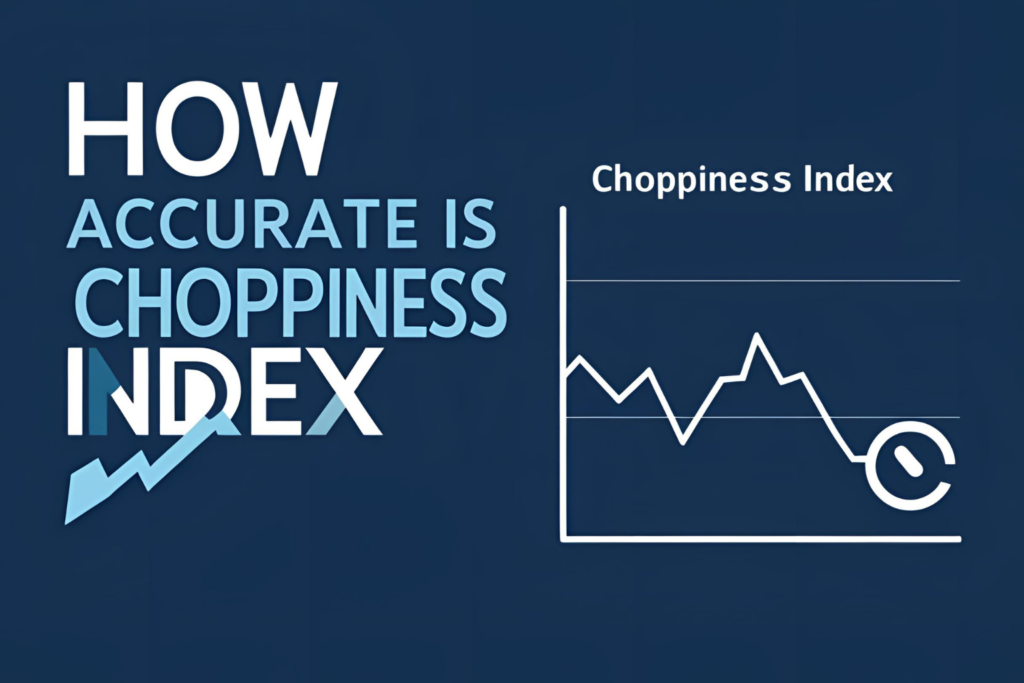Introduction
Traders often ask whether the Choppiness Index is accurate enough to rely on when analyzing the market. While no technical indicator is perfect, understanding how and when the Choppiness Index works best can improve its reliability in your trading strategy.
What Does the Choppiness Index Actually Measure?
It does not predict market direction. Instead, it measures market structure — whether the market is trending or consolidating.
- High values (>61.8) suggest a sideways market.
- Low values (<38.2) indicate strong trends.
Accuracy depends on how well you understand and apply this concept.
Factors Affecting Choppiness Index Accuracy
- Timeframe Used
- Works more reliably on longer timeframes like 1H, 4H, and daily.
- Can produce more noise on very short timeframes like 1-min.
- Period Setting
- A standard setting is 14.
- Lower settings (e.g., 5 or 10) respond faster but may create false signals.
- Market Type
- Performs best in assets with regular volatility (e.g., indices, liquid forex pairs).
- Less effective in extremely erratic or news-driven markets.
- Indicator Combinations
- Accuracy improves when used with:
✅ RSI or MACD
✅ Moving averages
✅ Volume analysis
- Accuracy improves when used with:
How to Increase Its Accuracy
- Use confirmation indicators
Don’t rely on it alone. Combine with direction-based tools. - Mark levels clearly
Add horizontal lines at 38.2 and 61.8 to visually catch choppy vs trending phases. - Backtest on your asset
Customize the period and thresholds after testing on past data.
When the Choppiness Index May Be Less Reliable
- During low liquidity sessions (e.g., after-hours or pre-market)
- Around major economic news releases
- In highly manipulated or volatile altcoins
In such cases, the readings might lag or fail to adjust quickly enough.
Conclusion: Is It Accurate?
Yes — if used correctly. The Choppiness Index is accurate for identifying trend vs range conditions, but not for predicting direction or exact entries. It’s a contextual tool, not a signal generator.
FAQs
1. Is the Choppiness Index a lagging indicator?
Yes, it’s calculated based on historical price action, so it reacts after moves begin.
2. Can I trust it on its own?
It’s better used as a filter with other indicators for higher accuracy.
3. Does it work in all markets?
Yes, but you must test and tune it for each asset type (stocks, forex, crypto).
4. Why is it more accurate on higher timeframes?
Higher timeframes reduce noise, allowing better trend detection.
5. Can I improve its performance with custom scripts?
Yes. Some platforms offer advanced versions with alerts and adaptive levels.
